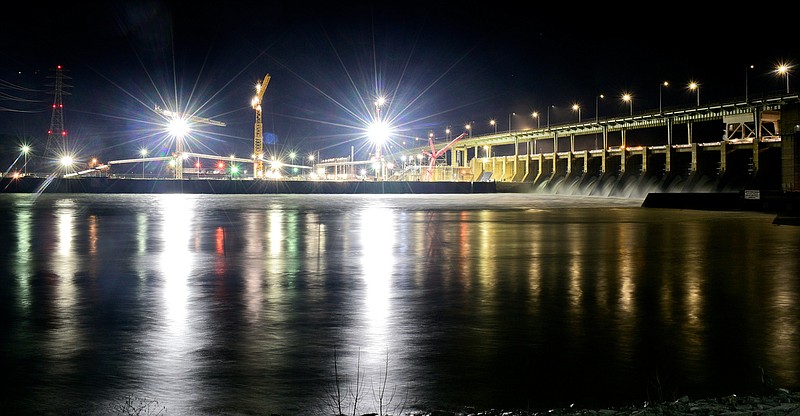Construction on the original navigation lock at Chickamauga Dam took about a year and a half. The construction of its replacement has taken, well, a lot longer.
Nearly 20 years after a Times Free Press headline said a congressional panel was including funds for the new lock, the project is again without new funding, its cost is soaring and its completion date has been pushed back another three or four years.
This is no way to run a government.
To say that the muck and mire of the federal morass have slowed infrastructure projects since the original lock was opened in 1937 is an understatement.
When funds first were included for the new lock in 2003, three presidents ago, the project was estimated to cost $375 million and take five years to complete. By the time construction began in 2005, the cost had soared to $500 million, then to $693 million.
Since then, there have been stops and starts, periods of no activity and years of no funding. Along the way, the federal funding formula for such projects was changed in an effort that supposedly would help the lock get finished sooner. And the priority of the lock -- with the completion of other projects -- allegedly had moved to the top of the U.S. Army Corp of Engineers' to-do list.
By 2012, the new lock was said to be 27% finished. In 2013, it was termed nearly half finished and was set to take another five years to be completed.
But, five years later in 2018, officials said it was only 28% complete and later in the year 31% finished. The cost by then was put at $758 million. The completion date was moved to 2024. U.S. Rep. Chuck Fleischmann, R-Chattanooga, said at the time the cost could increase to $815 million. Later that year, a news story used the figure of $850 million.
In 2021, according to newspaper archives, the finish date had moved to 2025.
Two years later, in the midst of high inflation, the Army Corps of Engineers said it is reassessing its cost and completion schedule. The project, according to the Biden administration's fiscal 2023 budget, was to have $39.3 million in funds. But the Army Corps' work plan for this year has no new funds for the lock.
Ten years after being termed nearly halfway finished, work continues, but it is reportedly only 42% complete.
Maybe it's just us, but doesn't it make sense to finish a project once it's started before moving on to another project? Doesn't the cost of materials, even in non-high inflationary times, make it critical to complete a project before the materials increase in price or become obsolete? Wouldn't it be prudent to have deadlines with construction companies after which there are monetary fines?
For all we know, the contractor, Shimmick Construction Co. of Oakland, Calif., may be doing all in its power to get the work done on time and on budget with the federal funding it's given. But the Corps is said to be engaged in an alternate dispute resolution process with Shimmick on the costs and schedule of the project.
Nevertheless, the lock has taken longer to build than Buckingham Palace (23 years), the Taj Mahal (21 years) the Great Pyramid of Giza (20 years) and Mount Rushmore (14 years), and it's going to be nowhere near as scenic.
We think if we were Fleischmann, we would throw our hands around the neck of the head of the Corps and scream, "I've been running on finishing the Chick Lock for seven elections, and I'm running out of things to say."
An email to his spokesman on the congressman's current thoughts on the project wasn't returned.
Exploration work began on Chickamauga Dam on May 1, 1935, with the first construction on Jan. 13, 1936, and the first concrete poured Sept. 1, 1936.
The cost of the entire dam project was said to be $32 million in 1937, when the lock opened, and by the time the project was finished on Oct. 31, 1940, the price had increased to $35.9 million. At its peak point, some 1,500 men worked on the dam. Oh, and it was completed two months ahead of schedule.
"Work during the next three years moved at an almost unheard-of pace," the Chattanooga Free Press wrote in 1940, referring to the period from 1937-1940, "the acceleration resulting in savings of several millions of dollars to TVA."
The lock, which was part of the first phase of construction, opened on June 29, 1937. It was said to be 360 feet in length, 60 feet in height and have a maximum lift of 53 feet.
When it was constructed, newspaper reports at the time said a provision was made on the north end of the lock for a larger future lock, which would be 600 feet long and 110 feet high.
As it turns out, that's the size of the new lock that's going to take more than two decades to build.
Yes, we had the Great Recession. And yes, we had COVID-19. But a project that is taking this long to build and may nearly triple in cost should be unacceptable. The private sector doesn't exist this way, and it shouldn't be business as usual for the federal government.
